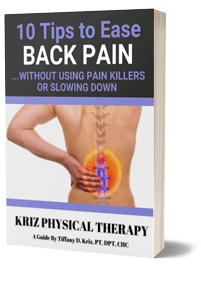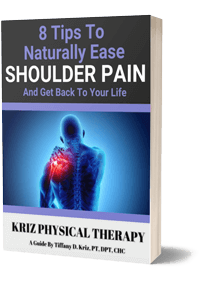Balance and stability are more than just physical skills—they’re the foundation of confident movement, injury prevention, and independence. Whether you’re navigating a rocky trail, carrying groceries, or simply getting up from a chair, balance is involved in nearly every move you make.
But here’s the good news: balance and stability are skills that can be improved, no matter your age. With intentional exercises and a few key changes to your daily routine, you can rebuild your sense of steadiness and reduce your risk of falls or injury.
In this blog, we’ll explore how balance works, why it tends to decline with age or inactivity, and practical strategies to help you feel more grounded, stable, and strong in everything you do.
Why Balance and Stability Matter
Balance isn’t just about staying upright—it’s about moving with ease. Good balance keeps you from falling, reduces joint strain, and helps your body move efficiently and safely through space.
Stability, on the other hand, is about control. It’s the ability to maintain posture, alignment, and coordination during movement. When balance and stability are strong, daily tasks become easier and more enjoyable.
Unfortunately, balance tends to decline with age due to:
- Reduced muscle strength (especially in the legs and core)
- Slower reflexes and reaction time
- Decreased vision or inner ear function
- Joint pain or past injuries
- Sedentary habits or lack of specific training
This decline often goes unnoticed until something happens—a near fall, or a moment of instability getting out of bed. That’s why it’s important to be proactive.
The Role of the Core in Stability
Your core is the powerhouse of stability. It includes more than just your abdominal muscles—it also involves your back, hips, glutes, and even your diaphragm.
When your core is weak or underactive, your body overcompensates in less efficient ways. This leads to poor posture, increased strain on the knees and back, and a higher risk of falls.
To improve balance, you must first build a stronger, smarter core.
Balance Training: Simple Moves That Make a Big Impact
You don’t need fancy equipment or a gym membership to start improving your balance. Try adding these simple exercises into your weekly routine:
- Single-Leg Stand: Stand near a wall or chair. Lift one foot off the ground and hold for 10–30 seconds. Switch sides.
- Heel-to-Toe Walk: Walk in a straight line, placing the heel of one foot directly in front of the toes of the other.
- Marching in Place: Lift your knees one at a time while keeping your torso upright. Try doing it with your eyes closed for an added challenge.
- Side-Stepping: Step side to side across a hallway or room. Add a resistance band around your thighs for difficulty.
- Bridge Pose: Lie on your back with knees bent, feet flat. Lift your hips up and engage your glutes. Hold and repeat.
Doing just 10–15 minutes of balance-focused exercises a day can build real improvements within weeks.
Functional Movements for Everyday Stability
Improving your balance isn’t just about static exercises—it’s about how you move in everyday life. Here are a few ideas:
- Sit-to-Stand Practice: Rise from a chair without using your hands.
- Staggered Stance Tasks: Do simple tasks like brushing your teeth with one foot slightly in front of the other.
- Uneven Terrain Walks: Take walks on grass or trails (with support if needed).
- Reaching and Turning: Practice reaching sideways or overhead while standing.
These movements challenge your balance in real-world scenarios and improve your ability to react.
Tools to Help You Train Smarter
There are simple tools and tricks you can use to enhance your balance training:
- Balance Pads or Cushions: Add instability to challenge your body more.
- Resistance Bands: Activate hips and core for better control.
- Walking Poles or Chairs: Offer support while practicing harder movements.
- Mirrors: Help you monitor posture and correct misalignments.
A physical therapist can also assess your balance and create a customized plan that evolves with your progress.
Don’t Forget About Footwear and Flooring
Believe it or not, your shoes and the surfaces you walk on play a major role in stability:
- Choose supportive footwear that fits well and accommodates your foot shape.
- Avoid walking barefoot on slick surfaces.
- At home, secure rugs, tuck away cords, and remove tripping hazards.
- Install grab bars and non-slip mats in bathrooms and kitchens.
Even small environmental changes can reduce your risk of slips and falls significantly.
Nutrition and Hydration’s Subtle Impact
Balance starts from within. Here’s how your diet and hydration affect it:
- Dehydration can lead to dizziness and decreased motor control.
- Blood sugar fluctuations may cause shakiness or delayed reactions.
- Vitamin D, calcium, and magnesium support muscle and bone function.
Eating balanced meals and staying hydrated throughout the day provides your muscles and nervous system with the fuel they need to help you stay upright and steady.
Staying Consistent—and Safe
The key to success is consistency. Balance and stability are skills that improve over time through repetition and practice.
Start with:
- 10 minutes of balance practice per day
- 2–3 sessions of core-focused strengthening each week
- Regular walks or activities that challenge your coordination
Always prioritize safety. Use a wall or chair for support, progress gradually, and avoid pushing through pain. If something feels off, slow down or consult a professional.
Finding Your Center Again
Balance and stability give you more than just physical control—they bring freedom. Freedom to move confidently, stay active, and participate fully in the things you love without fear.
Whether it’s walking in the park, playing a favorite sport, or keeping up with your grandchildren, improving your balance opens the door to more joyful movement.
Need a Little Extra Support?
At Kriz Physical Therapy, we help adults regain strength, balance, and confidence with personalized, one-on-one care.
We take the time to understand your goals and concerns, creating a plan tailored just for you. Whether you’re recovering from a fall, dealing with a chronic condition, or simply want to stay active and independent, we’re here to guide you every step of the way.
📞 Call (239) 992-6700 or visit krizphysicaltherapy.com to schedule your FREE Discovery Visit and take the first step toward steady, stable, pain-free living.




